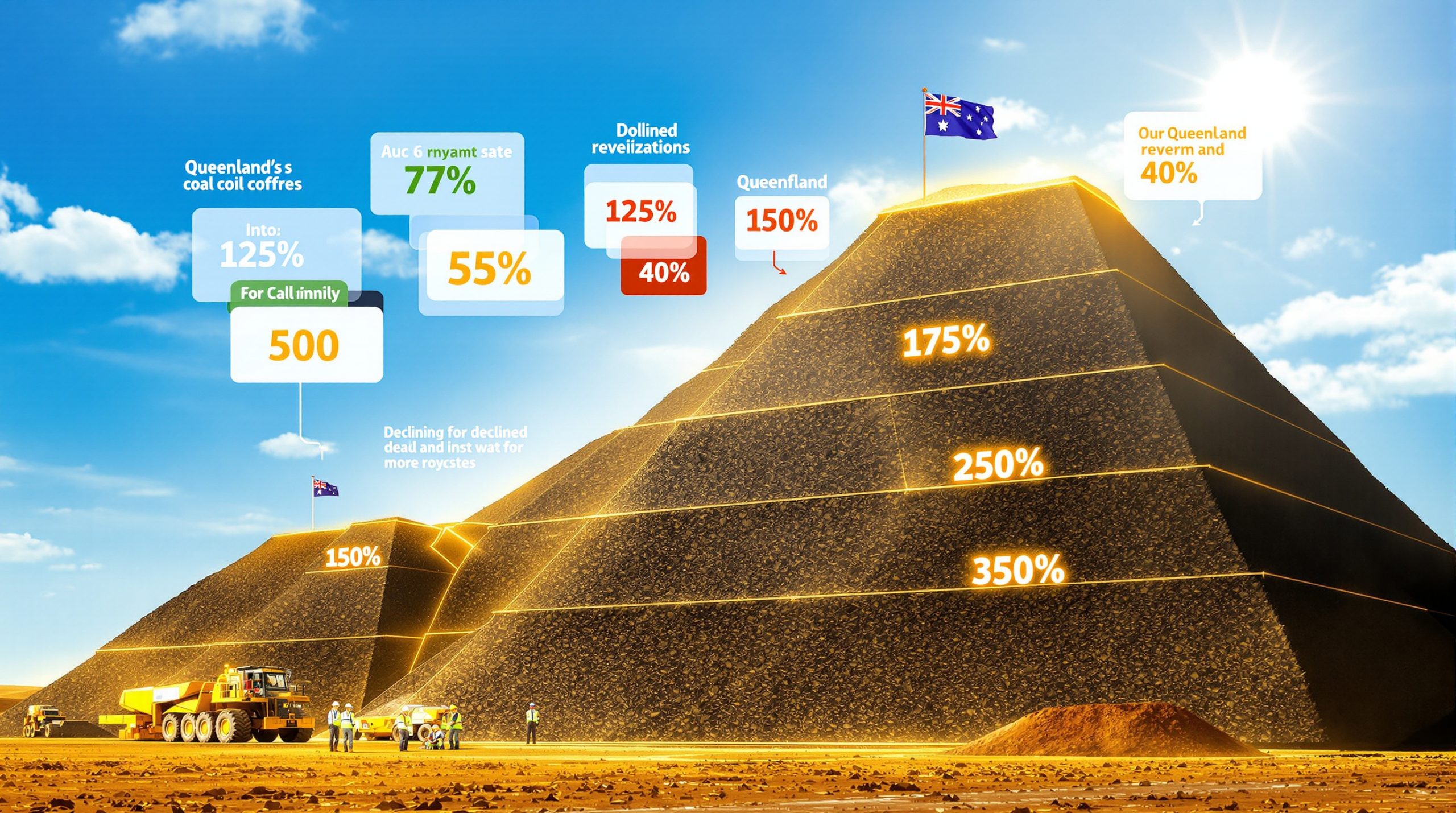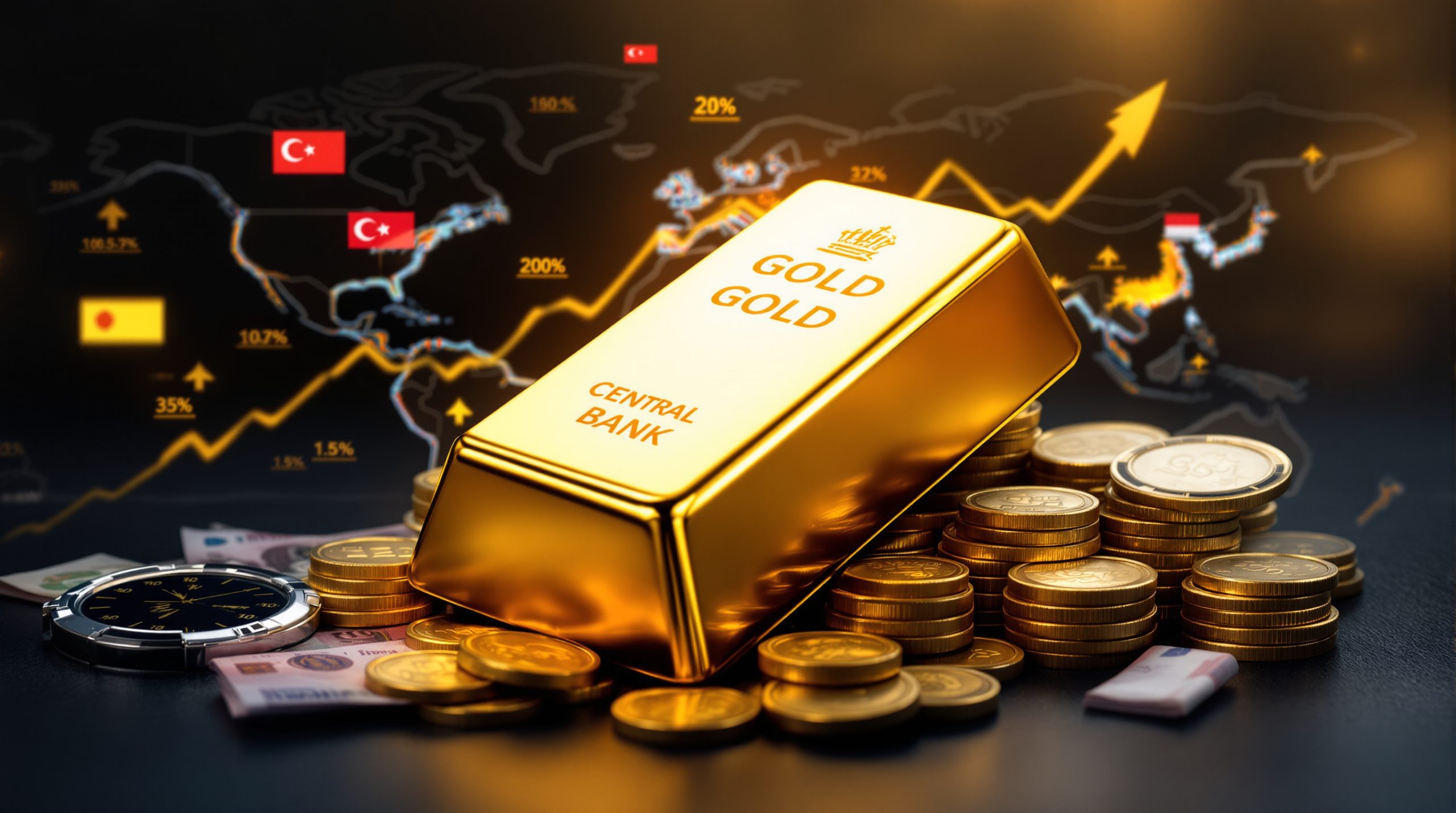What Makes Silver and Gold Valuable Investments?
Gold and silver have maintained their status as premier investment assets for thousands of years, offering unique benefits that continue to attract investors seeking stability and growth in their portfolios. Their enduring appeal comes from several fundamental characteristics that distinguish them from other asset classes.
The Historical Significance of Precious Metals
Throughout human civilization, precious metals have functioned as reliable stores of value across diverse economic conditions. Unlike government-issued currencies that can be created at will through monetary policy decisions, gold and silver possess inherent scarcity that underpins their long-term value proposition.
This natural limitation on supply has allowed these metals to maintain purchasing power through wars, economic collapses, and currency devaluations that have destroyed countless paper currencies throughout history.
"The historical significance of gold and silver isn't merely traditional—it's practical," notes Rick Rule, renowned resource investor. "These metals have survived every major economic crisis, currency collapse, and government default in recorded history."
Current Market Performance and Trends
The performance of precious metals over recent decades provides compelling evidence of their value as investment assets. Gold has appreciated approximately 11-fold since 2000, climbing from around $253 to over $3,250 per ounce by 2025. This remarkable growth trajectory has significantly outpaced inflation while many paper currencies have steadily lost purchasing power.
Silver, while more volatile due to its smaller market size (approximately $1.5 trillion compared to gold's $13 trillion market), typically delivers even stronger percentage gains during robust bull markets. This volatility represents both risk and opportunity for strategic investors.
Recent central banks and precious metals buying has reached historic levels, with official institutions purchasing over 1,136 tonnes of gold in 2024 alone—a clear signal that even governments recognize the importance of holding hard assets in uncertain economic times.
Purchasing Power Protection
Perhaps the most compelling case for silver and gold investment centers on their role as hedges against currency devaluation. With the U.S. dollar's purchasing power continuously eroding and national debt increasing by approximately $4 trillion annually (combining $2 trillion in recognized debt growth plus $2 trillion in off-balance sheet liability increases), precious metals provide a counterbalance to this monetary deterioration.
"The decline in the purchasing power of the dollar is going to be inexorable," warns Rule. "We're likely to see the dollar's value erode by 7.5–8% compounded annually over the next decade, similar to what happened in the 1970s."
This protection against monetary debasement becomes increasingly valuable as global central banks continue expanding their balance sheets and governments accumulate unsustainable debt levels.
Historical Perspective: During the 2008 financial crisis, while the S&P 500 fell approximately 38%, gold rose by 25%—demonstrating its countercyclical nature during periods of financial stress and uncertainty.
How Do Economic Factors Influence Precious Metals?
The performance of silver and gold investments is intrinsically linked to broader economic conditions, monetary policy decisions, and fiscal health. Understanding these relationships helps investors position themselves advantageously across different market cycles.
Government Spending and National Debt
The United States currently faces unprecedented financial challenges that directly impact precious metals markets. National debt is approaching $37 trillion and growing by approximately $2 trillion annually. When combined with off-balance sheet liabilities exceeding $100 trillion (including unfunded Medicare, Social Security, and pension obligations), the total obligations significantly exceed the country's $141 trillion in private net worth.
This fiscal imbalance creates structural pressure toward currency devaluation as the most politically feasible solution to manage the debt burden. As Rule explains, "The only politically viable way out of our problem is to depreciate the value of the U.S. dollar… inflating away the net present value of our obligations."
This environment typically benefits precious metals as investors seek tangible assets to preserve wealth against the erosion of currency purchasing power.
Inflation Scenarios and Historical Parallels
Current economic indicators suggest the possibility of sustained inflation similar to the 1970s, when purchasing power declined by 7-8% annually for a decade. During that period, gold rose from $35 to $850 per ounce—a 2,300% increase that vastly outpaced general inflation.
Modern monetary policies share concerning similarities with that era, including:
- Persistent federal budget deficits (currently 5-6% of GDP)
- Monetization of government debt through central bank purchases
- Significant expansion of money supply metrics (M2 grew at 5.3% in 2025)
- Rising commodity prices across energy and agricultural sectors
These parallels suggest we may be entering another extended period where precious metals outperform conventional financial assets as an inflation hedge record highs become more common.
Central Bank Policies and Their Impact
Central banks worldwide are sending mixed signals that savvy investors recognize as bullish for precious metals. While publicly promoting fiat currency systems, these institutions have dramatically increased their gold purchases, with net buying reaching record levels in recent years.
This dichotomy—between their public positions and their actions—reveals an underlying concern about long-term monetary stability. As one central banker anonymously confided, "Gold still represents the ultimate form of payment in the world. It's an asset that has no liability attached to it."
The impact of quantitative easing policies has been particularly supportive for precious metals. Following the 2008 crisis, gold rose approximately 150% in three years as the Federal Reserve expanded its balance sheet. Similar monetary expansion is occurring today, creating comparable conditions for metals appreciation.
Technical Insight: The gold-to-monetary-base ratio remains below historical averages, suggesting significant upside potential as monetary debasement continues. If this ratio were to return to its long-term mean, gold prices would need to rise substantially from current levels.
What Are the Different Ways to Invest in Precious Metals?
Investors have multiple options for gaining exposure to silver and gold, each offering different risk-reward profiles, liquidity characteristics, and tax implications. Understanding these distinctions helps build a strategic precious metals portfolio aligned with individual investment goals.
Physical Bullion: Coins, Bars, and Storage Options
Direct ownership of physical precious metals provides the most straightforward exposure to gold and silver prices while eliminating counterparty risk. However, this approach requires careful consideration of product selection, storage solutions, and security protocols.
Investment Options Include:
-
Government-minted coins: American Eagles, Canadian Maple Leafs, Australian Kangaroos
- Premium: 4-8% over spot (higher for smaller denominations)
- Advantages: High recognition, excellent liquidity, government guarantee of weight and purity
- Considerations: Higher premiums than bars, potential collectible tax treatment
-
Private mint bars and rounds: Various weights from 1 gram to 1000+ ounces
- Premium: 2-5% over spot (lower for larger sizes)
- Advantages: Lower acquisition cost, efficient storage, pure investment play
- Considerations: Requires verification of authenticity, slightly lower liquidity than government coins
-
Secure storage solutions:
- Home safes: Lowest cost, highest personal risk
- Bank safety deposit boxes: Moderate cost, potential access restrictions during banking holidays
- Professional vaulting: Higher cost, insured, often offers international diversification and segregated storage
"Physical metals provide portfolio insurance that works precisely when other financial assets fail," explains Rule. "However, investors must consider security costs and liquidity constraints when allocating to physical metals."
Mining Stocks and ETFs
Equity investments in the precious metals sector offer leveraged exposure to metal prices due to the operational characteristics of mining companies. This amplification effect can dramatically enhance returns during bull markets—but also accelerates losses during downturns.
The Mining Equity Spectrum:
-
Major producers (Newmont, Barrick, Agnico Eagle)
- Characteristics: Established operations, dividend payments, lower risk profile
- Leverage: Typically 2-3x movement relative to underlying metal prices
- Best for: Conservative investors seeking sector exposure with income
-
Mid-tier producers (Alamos Gold, SSR Mining, Yamana)
- Characteristics: Growing production profiles, acquisition potential, moderate risk
- Leverage: Typically 3-5x movement relative to underlying metal prices
- Best for: Growth-oriented investors with moderate risk tolerance
-
Junior explorers (varies by market cycle)
- Characteristics: Pre-production, high potential for discovery, highest risk profile
- Leverage: Can exceed 10x movement relative to underlying metal prices (both up and down)
- Best for: Speculative capital with high risk tolerance and sector expertise
-
ETFs (GDX, GDXJ, SIL, SILJ)
- Characteristics: Diversified exposure, high liquidity, minimal research requirements
- Leverage: Varies by fund (majors vs. juniors)
- Best for: Investors seeking simplified exposure without company-specific research
The operating margins of mining companies amplify price movements in the underlying metals. As Rule explains, "A company with 10% margins may see profits increase tenfold when metal prices double. It's simple math—if your margins go from 10% to 60%, your earnings grow by 600%."
Royalty and Streaming Companies
These specialized businesses represent a unique risk-adjusted approach to precious metals investing that combines elements of finance and mining exposure:
- Business model: Provide upfront capital to miners in exchange for a percentage of future production or revenue
- Operating margins: Typically 90%+ (vs. 30-50% for producers)
- Key advantages:
- No direct exposure to operating costs or capital expenditure overruns
- Portfolio diversification across dozens or hundreds of mining projects
- Consistent cash flow with growth potential from project expansions
- Reduced environmental and social governance (ESG) risk exposure
Leading companies in this space include Franco-Nevada (386 royalty/streaming assets), Wheaton Precious Metals (focus on larger streaming deals), and Royal Gold (balance of royalties and streams).
"Royalty and streaming is a better business on a risk-adjusted basis," notes Rule. "You take away a bit of upside by eliminating most of your downside. These companies have dramatically outperformed the broader mining sector over complete market cycles."
Investment Comparison: During the 2020-2023 bull market, while Franco-Nevada gained approximately 85%, producer Barrick Gold rose 120%—but in the subsequent correction, Franco-Nevada declined only 15% while Barrick fell 35%, demonstrating the downside protection of the royalty model.
How Should Investors Build a Precious Metals Portfolio?
Constructing an effective precious metals portfolio requires balancing multiple considerations: risk tolerance, investment horizon, market timing, diversification, and allocation size. The following framework provides guidance for both new and experienced investors in this specialized sector.
Starting with Quality: Core Holdings
New investors should establish core positions in high-quality assets before venturing into more speculative investments. This foundation provides stability while still offering significant appreciation potential during bull markets.
"Start your portfolio with quality," advises Rule. "Buy the really good stuff first. The time to speculate is after you've secured your core positions."
Recommended Core Holdings:
-
Physical bullion: Government-minted coins or recognized private mint bars
- Allocation: 30-40% of precious metals portfolio
- Purpose: Direct price exposure without counterparty risk
-
Major royalty companies: Franco-Nevada, Wheaton Precious Metals, Royal Gold
- Allocation: 20-30% of precious metals portfolio
- Purpose: Reduced operational risk with strong dividend potential
-
Established producers with strong balance sheets: Newmont, Barrick, Agnico Eagle
- Allocation: 20-25% of precious metals portfolio
- Purpose: Leveraged exposure with manageable risk profile
-
Diversified precious metals ETFs: GDX, GDXJ, SIL
- Allocation: 10-15% of precious metals portfolio
- Purpose: Broader market exposure without company-specific research
This core allocation provides both stability and appreciation potential, with historical sector outperformance of 200-400% over multi-year bull cycles. During the 2000-2011 bull market, for example, the GDX miners ETF delivered approximately 300% beta to gold's price movement.
Portfolio Allocation and Diversification Strategies
Effective precious metals portfolios typically follow structured allocation principles that balance opportunity with prudent risk management:
-
Overall investment portfolio: 5-15% allocation to precious metals
- Conservative investors: 5-7%
- Moderate investors: 8-10%
- Aggressive investors: 11-15%
-
Within metals allocation:
- Gold: 60-70% (lower volatility, institutional acceptance)
- Silver: 20-30% (higher volatility, greater percentage upside)
- Platinum/palladium/specialty miners: 5-10% (opportunistic positions)
-
Physical vs. equity balance:
- Lower risk tolerance: 60% physical, 40% equities
- Moderate risk tolerance: 40% physical, 60% equities
- Higher risk tolerance: 20% physical, 80% equities
-
Position sizing for junior companies:
- Limit individual speculative positions to 0.5-1% of total portfolio
- Expect 50% to underperform despite thorough research
- Aim for 3-5x returns on winners to offset inevitable losses
"Your precious metals allocation should reflect both economic outlook and personal risk tolerance," notes Rule. "The more concerned you are about systematic financial risk, the higher your allocation to physical metals should be."
Risk Management in Volatile Markets
Precious metals investments require specific risk management techniques that differ from conventional equity approaches:
-
Accept volatility as normal: "If you can't stand 15% volatility, get a paper route," Rule advises. "These stocks can rise or fall 15% for no reason whatsoever."
-
Research commitment: "We ask people to spend an hour a month on every stock in their portfolio," says Rule. This ongoing due diligence is essential in a sector prone to dramatic revaluations.
-
Position limits: Maintain a manageable number of positions (maximum 10 stocks for investors who can dedicate 10 hours monthly to research)
-
Long-term perspective: Maintain a 5+ year investment horizon to capture complete market cycles
-
Dollar-cost averaging: Rather than attempting to time market entries perfectly, establish positions gradually over time
-
Rebalancing discipline: When metals or miners significantly outperform, trim positions to maintain target allocations
The Yale Endowment model, which allocates approximately 7.4% to commodities and natural resources, provides an instructive example of how sophisticated institutional investors approach this sector. Their approach emphasizes patient capital deployment with a multi-year investment horizon.
Behavioral Insight: The primary reason investors underperform in precious metals is emotional decision-making during periods of extreme volatility. Having predetermined investment rules helps prevent selling quality assets during temporary downturns or chasing performance during speculative manias.
What Are the Unique Characteristics of Silver vs. Gold Investments?
While often grouped together as "precious metals," silver and gold exhibit distinct investment characteristics that influence their performance across different market environments. Understanding these differences helps investors optimize their precious metals allocation strategy.
Silver's Dual Role: Industrial Metal and Investment Asset
Silver presents a distinctive investment case due to its bifurcated demand profile that spans both industrial applications and investment demand:
Industrial Applications (60% of demand):
- Electronics and electrical: Circuit boards, switches, conductors
- Photovoltaic (solar) panels: Second-largest industrial use, growing at 15% annually
- Medical devices: Antimicrobial properties drive healthcare applications
- Water purification: Municipal and consumer filtration systems
- Emerging technologies: Printed electronics, superconductors, battery technologies
Investment Characteristics:
- Smaller market size ($1.5 trillion vs. gold's $13 trillion) creates greater price volatility
- Historically delivers higher percentage gains during established bull markets
- Lower unit price makes it psychologically accessible to more investors
- Higher storage costs relative to value (requires approximately 80x more space than equivalent gold value)
"Silver is gold on steroids," observes Rule. "It typically lags gold initially in bull markets but eventually outperforms as momentum builds and general investor interest expands to the entire precious metals sector."
This dual nature means silver often exhibits hybrid behavior—sometimes tracking gold as a monetary metal, other times following industrial metals like copper. This complexity creates both challenges and opportunities for strategic investors with insight into the gold-silver ratio insights.
Gold's Monetary History and Central Bank Demand
Gold maintains its status as the premier monetary metal due to several distinguishing characteristics:
Monetary Role:
- Central bank reserve asset (over 35,000 tonnes held by official institutions)
- Growing sovereign accumulation (1,136 tonnes purchased in 2024 alone)
- Zero counterparty risk (not simultaneously someone else's liability)
- Limited industrial consumption preserves monetary function
- Historical recognition across all cultures and time periods
Market Characteristics:
- Deeper market liquidity supports larger position sizes
- Lower volatility attracts institutional capital
- Greater storage efficiency (higher value-to-volume ratio)
- More consistent performance during economic stress periods
Gold's monetary role has been reinforced in recent years by central bank diversification away from dollar reserves. Russia, China, Turkey, and India have led substantial purchasing programs
Want to Be First to Know About Major Mineral Discoveries?
Stay ahead of the market with Discovery Alert's proprietary Discovery IQ model, delivering instant notifications on significant ASX mineral discoveries that could rival historic returns from companies like De Grey Mining. Visit our discoveries page to explore how major mineral finds can transform your investment portfolio and begin your 30-day free trial today.




